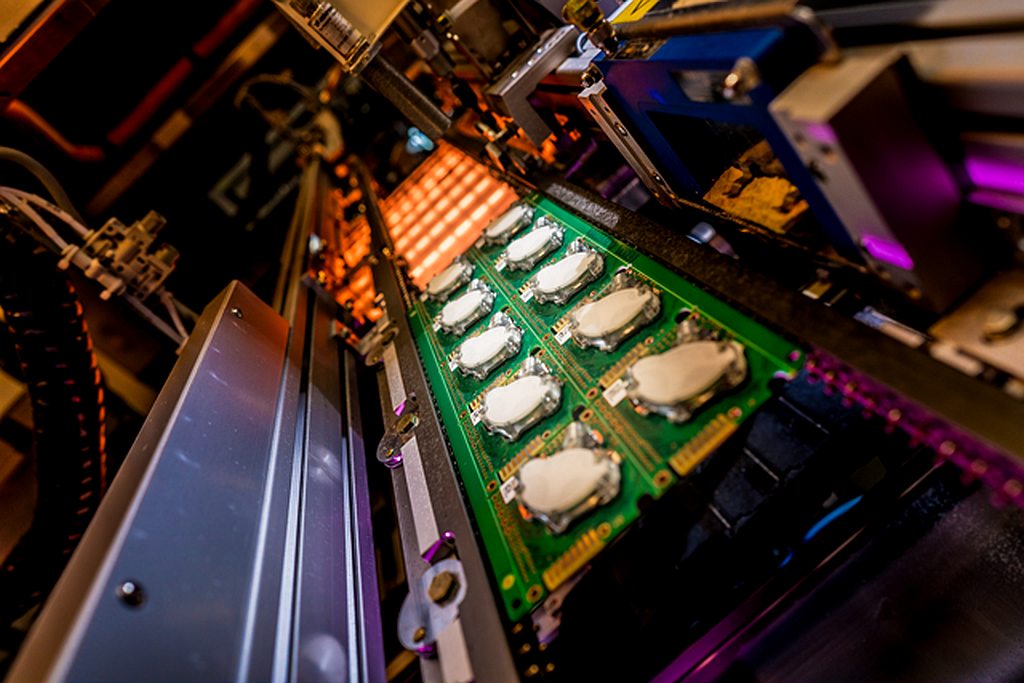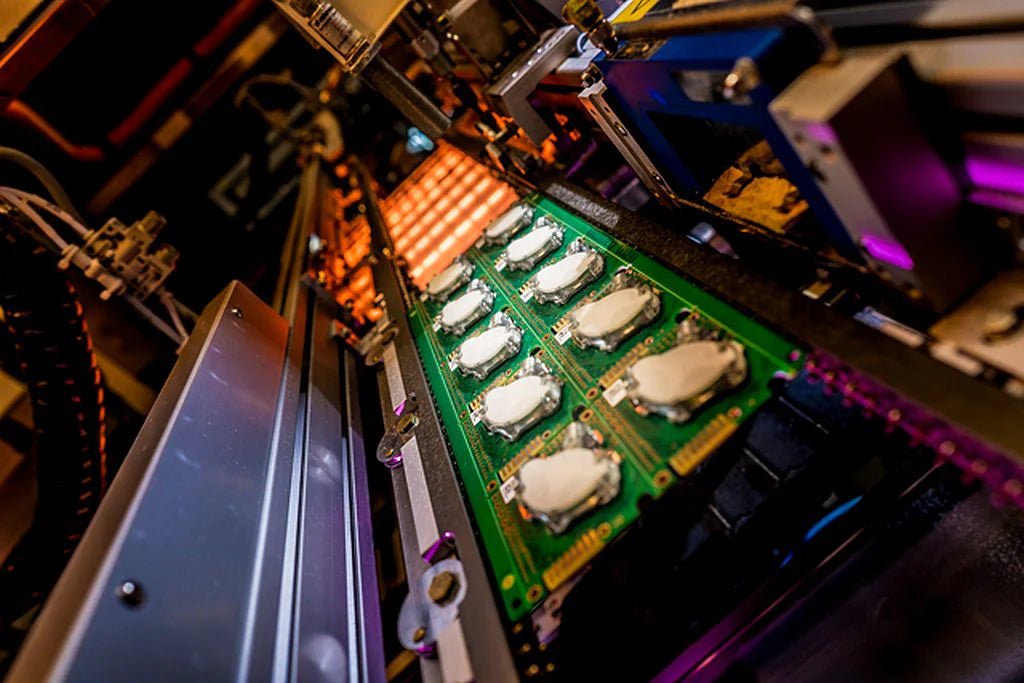
A university study has found the SenseAir K-33 BLG 30% CO2 + RH/T and K-33 ELG 1% CO2 + RH/T data-logging environmental sensors gave similar results to a Vaisala CO2 Probe in both testing and real-world experiments.
The study was conducted by a team of Environmental Engineering Researchers from the University of California, Merced. They were looking for a lower cost alternative to the Vaisala GMP343 Probe, a well-known brand of environmental sensor. Their goal was to develop a proof-of-concept for low-cost tools for long-term measurement and data logging of CO2 concentrations and fluxes in terrestrial ecosystems.
In addition to costing less than 1/10 the price of a Vaisala Probe, the SenseAir sensors have the advantage of including on-board temperature and relative humidity sensors, as well as built-in memory for data logging. Both the K-33 ELG 1% CO2 and K-33 BLG 30% CO2 sensors can collect up to 5,400 time-stamped data points in internal memory for later download. In addition, the SenseAir sensors can be powered by batteries in the field.
The first phase of the project was to calibrate the SenseAir sensors against a benchmark instrument, the LI-COR, Inc. LI-6400 gas analyzer. Both sensors tracked favorably at higher CO2 levels, although the wider range of the K-33 BLG 30% sensor was less accurate below 1,500ppm.
The second phase was to test the sensors on leaf cutter ant next vents. The K-33 BLG point system yielded comparable spatial and temporal patterns and slightly higher CO2 concentrations in comparison with a Vaisala GMP343 probe.
According to the study, their results provided “proof-of-concept for the use of SenseAir sensors in low-cost, portable CO2 sensing systems to enable terrestrial ecologists to substantially improve the characterization of CO2 fluxes and concentrations in heterogeneous environments.”
Long-term measurement of the natural terrestrial carbon cycle can provide additional data to scientists who want to further our understanding of the global carbon cycle.
The study was published in the November, 2015 issue of Methods in Ecology and Evolution Journal by the British Ecological Society. You can read the entire study online here.
Senseair K30, Vaisala and GE CO2 Sensors Compared
SenseAir's K30 carbon dioxide sensor beat a similar-specified GE sensor as well as several other brands in a head-to-head calibration test.
In a side-by-side comparison of low-cost NDIR sensors to measure outdoor carbon dioxide levels, the SenseAir K30 Sensor was selected as the most accurate over the Vaisala CMM222C, ELT Company S100, Korean Digital Company (KCD) AN100 and GE Sensing T6615 CO2 Sensors.
The detailed comparison was published in the article "Comparison of the Characteristics of Small Commercial NDIR CO2 Sensor Models and Development of a Portable CO2 Measurement Device" in the MDPI Open Access Journals Platform.
The authors wrote the article as the result of a study to determine if low cost NDIR CO2 sensors could be easily calibrated and were accurate enough to use in a low-cost portable device designed to record carbon dioxide levels from many locations in a large urban environment over time.
To conduct their experiment, the team purchased three copies of five different commercially available NDIR sensors and tested them in a classroom. In addition, they tested each sensor against four samples of standard gas with different CO2 concentrations.
According to their results, "The outputs of K30 and AN100 models showed linear relationships with temperature and length of use. Calibration coefficients for sensor models were determined using the data from three individual sensors of the same model to minimize the relative RMS error. When the correction was applied to the sensors, the accuracy of measurements improved significantly in the case of the K30 and AN100 units. In particular, in the case of K30 the relative RMS error decreased from 24% to 4%. Hence, we have chosen K30 for developing a portable CO2 measurement device."
SenseAir CO2 Sensor Accuracy Tested

SenseAir's K30 carbon dioxide sensor beat a similar-specified GE sensor as well as several other brands in a different head-to-head calibration test.
Researchers at the University of Maryland's Department of Atmospheric and Oceanic Science and Earth System Science Interdisciplinary Center were testing carbon dioxide sensors at part of a long-term CO2 monitoring project. To verify the accuracy of their test instruments, the researchers calibrated a SenseAir K30 CO2 sensor and a similarly rated GE CO2 sensor. For verification, they also used a pSense handheld unit by CO2Meter.com, and a Picarro Cavity Ring-Down Spectroscopy (CRDS) Analyzer capable of measuring CO2 with parts-per-billion accuracy.
The image shows the calibration graphs for the Picarro, the pSense, and the K30 CO2 sensor in white, with the GE sensor in green. Not only did the GE sensor show below normal CO2 readings in fresh air, but after being tested with CO2 (spike at red arrow), it did not recover quickly.
According to Professor Ning Zeng, "I attached some cross-calibration (data logs) we did with K30, a GE sensor, and pSense handheld compared to the Picarro analyzer on loan to us. As you can see, K30 and pSense both show similar changes as the Picarro."
This calibration test mirrors the results of a 2012 article "Comparison of the Characteristics of Small Commercial NDIR CO2 Sensor Models and Development of a Portable CO2 Measurement Device" in the MDPI Open Access Journals Platform. The article compared the SenseAir with other sensors, and determined the SenseAir K30 was more accurate than the rest when properly calibrated.
SenseAir CO2 Sensor Competes with CRDS Unit
Non-dispersive infrared (NDIR) sensors are a low-cost way to measure carbon dioxide levels in ambient air. However, low-cost NDIR sensors have historically been discounted by scientists who consider laser cavity-ring down spectroscopy (CRDS) analyzers the gold standard for CO2 measurement.
That’s why we were interested in reading a paper titled “Performance and Environmental Correction of a Low-Cost NDIR CO2 Sensor” by Cory Martin. The paper was published as part of his Master’s Thesis for the Department of Atmospheric and Oceanic Science at the University of Maryland.
Mr. Martin compared the accuracy of SenseAir’s K30 CO2 sensor to a laser CRDS CO2 analyzer. After working with both products Mr. Martin concluded that:
“Once correcting for a zero-offset, and performing a regression analysis, the practical accuracy of these [K-30] sensors is less than five parts per million…With errors in this range, these instruments could be used in a variety of scientific applications, including one where the cost allows for the spatial density of observations to better represent an area’s CO2 concentration than that of a single high-accuracy observation site.”
Martin further concluded that the K30 sensor “has the potential to compliment traditional higher accuracy but high cost instruments in certain CO2 monitoring applications.”
NDIR and CRDS Technology Compared
Both NDIR and CRDS depend on carbon dioxide’s absorption of light at the 4.26 µm wavelength. A light source is emitted at one end of a chamber and measured at the other. According to the Beer-Lambert law, the absorption can be used to compute the number of CO2 molecules in a sample.
Where the technologies differ is that the CRDS uses time-based measurement to determine the amount of CO2 in the sample whereas NDIR uses the intensity of light. In addition, CRDS uses a longer path (the cavity ring) which theoretically results in higher sensitivity. In some cases, CRDS can be used to measure CO2 in the parts-per-billion (ppb) range.
While past studies have shown that in laboratory conditions NDIR sensors can approach CRDS sensors in terms of accuracy, the SenseAir K30 shows that it can also do it at a price point available at any budget.







